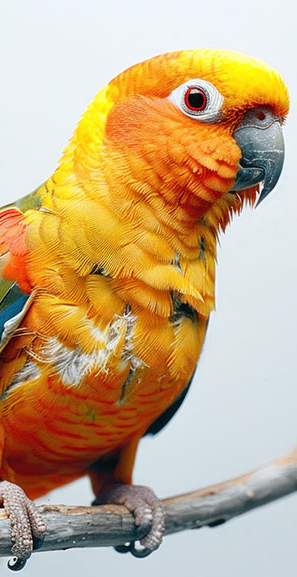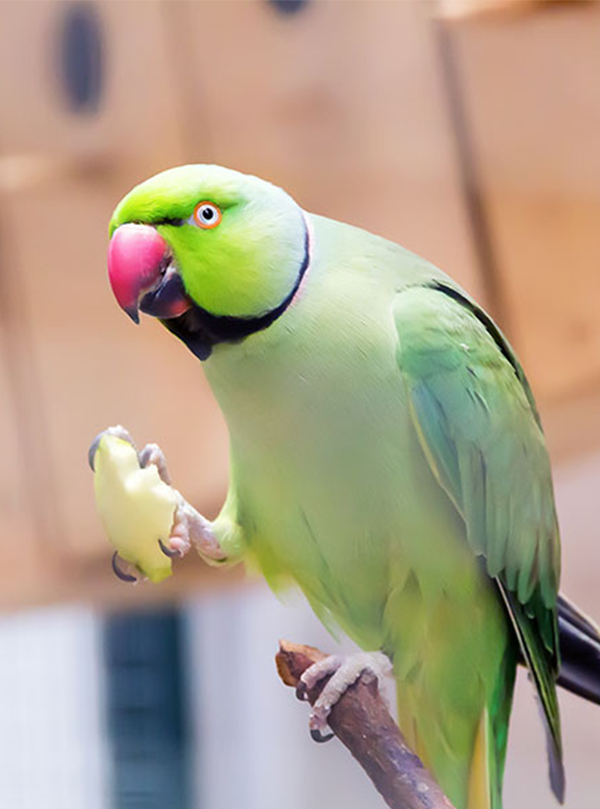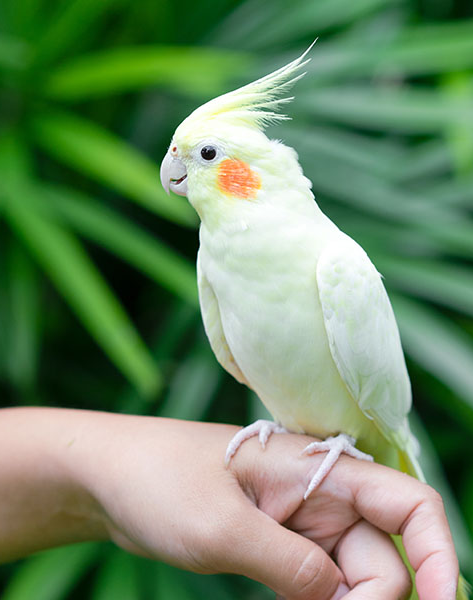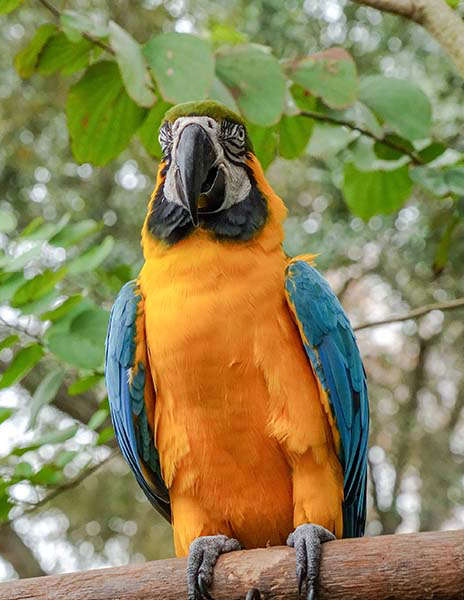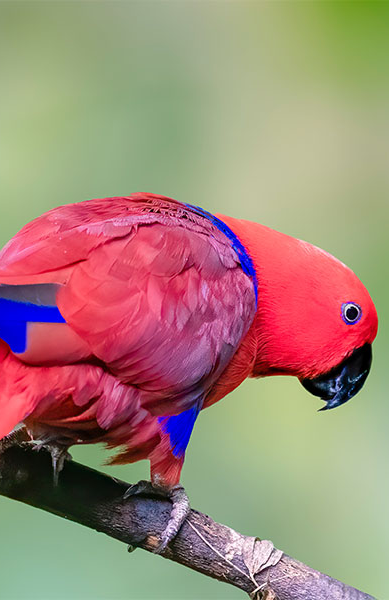Parrots
Everything You Need to Know About Parrots
Introduction
Brief overview of parrots as popular and charismatic birds.
Parrots are widely celebrated for their vibrant plumage, remarkable intelligence, and engaging personalities, making them among the most popular and charismatic birds in the world. With their striking colors ranging from deep blues and brilliant greens to fiery reds and vibrant yellows, parrots captivate the eye and imagination alike. Beyond their visual appeal, these avian wonders are renowned for their ability to mimic human speech and sounds, showcasing a level of intelligence that intrigues researchers and delights enthusiasts.
In addition to their cognitive abilities, parrots are highly social creatures known for forming strong bonds with their human companions. They thrive on interaction and often display affection through gestures like head bobbing, vocalizations, and even playful antics. Their engaging personalities make them beloved pets and subjects of fascination for bird watchers and researchers alike, as they navigate their environments with curiosity and adaptability. Whether soaring through tropical rainforests or charming households around the globe, parrots continue to captivate with their beauty, intelligence, and charismatic charm.
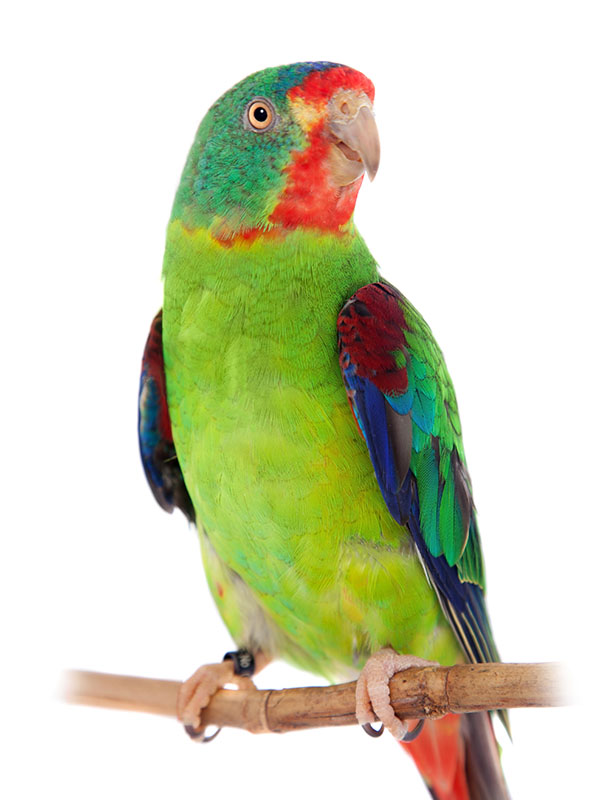
Importance of understanding their unique characteristics and care needs.
Understanding the unique characteristics and care needs of parrots is essential for ensuring their well-being in captivity. Unlike traditional pets, parrots have specific dietary requirements that include a diverse range of seeds, fruits, vegetables, and sometimes specialized pellets to meet their nutritional needs. Proper housing is equally critical, with spacious cages that allow for ample movement and various perches to promote foot health and exercise. Enrichment activities such as toys that encourage mental stimulation and foraging mimic their natural behaviors in the wild, preventing boredom and promoting physical and psychological health.
Moreover, parrots’ social nature necessitates regular interaction with their human caregivers or other parrots, fostering a sense of companionship and preventing loneliness. Understanding their behavior, such as vocalizations that indicate mood or needs, allows owners to respond appropriately to their pets’ emotional states. Recognizing signs of illness and seeking prompt veterinary care are also vital, as parrots are susceptible to specific health issues like respiratory infections and nutritional deficiencies. Ultimately, by comprehending and addressing these unique characteristics and needs, parrot owners can create a nurturing environment where these intelligent and charismatic birds can thrive for years to come.
Diversity of Parrot Species
Overview of the various types of parrots (Macaws, Cockatoos, Amazons, Conures, Budgies).
Parrots encompass a diverse array of species, each with its own distinctive characteristics and charm. Among the most iconic are Macaws, known for their large size, vibrant plumage, and powerful beaks. Species like the Scarlet Macaw with its vivid red and blue feathers, and the Blue and Gold Macaw with its striking blue and yellow coloring, are popular choices among enthusiasts due to their majestic appearance and intelligence.
Cockatoos, distinguished by their crests and affectionate demeanor, come in various types such as the Sulphur-crested Cockatoo and the Major Mitchell’s Cockatoo. They are cherished for their playful personalities and strong bonds with their owners. Amazons, medium to large-sized parrots, are recognized for their green plumage and often colorful accents. Species like the Yellow-headed Amazon and the Blue-fronted Amazon are admired for their vocal talents and social nature.
Conures, smaller parrots with vibrant colors and playful personalities, include species like the Sun Conure and the Green-cheeked Conure. They are prized for their lively antics and adaptability to domestic environments. Budgies, or Budgerigars, are small parrots known for their friendly disposition and ability to mimic sounds. They are popular pets due to their compact size, intelligence, and ease of care. Each type of parrot offers unique characteristics that appeal to bird enthusiasts and pet owners, contributing to their popularity and diverse representation in homes worldwide.
Description of their physical characteristics and natural habitats.
Parrots exhibit a wide range of physical characteristics adapted to their diverse natural habitats across tropical and subtropical regions worldwide. Typically, parrots are medium to large-sized birds with strong, curved beaks designed for cracking nuts and seeds. They often sport vibrant plumage in colors ranging from dazzling blues, greens, and yellows to softer shades of red and grey, providing camouflage or signaling social status in the wild.
Their feet are zygodactyl, meaning two toes face forward and two face backward, facilitating a powerful grip on branches and allowing for agile climbing and manipulation of objects. Parrots are agile flyers, capable of swift aerial maneuvers and long-distance flights in search of food and suitable nesting sites. Their natural habitats include dense rainforests, open woodlands, savannas, and even arid scrublands, where they forage for fruits, seeds, nuts, and occasionally insects.
In their native environments, parrots play crucial roles as seed dispersers and contributors to forest ecology. They exhibit social behaviors such as flocking and communal roosting, where they communicate through a repertoire of calls and vocalizations. Understanding these physical adaptations and their natural habitats provides insights into the specialized care needs required when keeping parrots in captivity, ensuring their health and well-being are maintained to replicate aspects of their wild lives.
Parrot Behavior and Intelligence
Exploration of parrot intelligence and problem-solving abilities.
Parrots are renowned for their exceptional intelligence and impressive problem-solving abilities, which rival that of primates and dolphins among non-human animals. Their ability to mimic human speech and learn complex tasks reflects advanced cognitive capabilities. Studies have shown that parrots possess reasoning skills, memory retention, and the ability to recognize patterns, which are essential for survival in the wild and adaptation to changing environments.
One remarkable aspect of parrot intelligence is their capacity for vocal learning, enabling them to mimic not only human speech but also a wide array of sounds in their environment. This ability is linked to a well-developed brain region called the nidopallium, which plays a crucial role in vocal learning and cognitive processes. Parrots demonstrate problem-solving skills in various contexts, such as manipulating objects to access food rewards, navigating complex environments, and even understanding cause-and-effect relationships in learning tasks.
Their intelligence also extends to social interactions, where parrots exhibit complex behaviors like cooperation, communication through body language and vocalizations, and even empathy towards others. Understanding and appreciating their cognitive abilities not only enhances our interactions with parrots but also underscores the importance of providing them with enrichment activities and mental stimulation to promote their well-being in captivity.
Discussion on social behavior, bonding with humans, and interaction with other parrots.
Parrots are renowned for their exceptional intelligence and impressive problem-solving abilities, which rival that of primates and dolphins among non-human animals. Their ability to mimic human speech and learn complex tasks reflects advanced cognitive capabilities. Studies have shown that parrots possess reasoning skills, memory retention, and the ability to recognize patterns, which are essential for survival in the wild and adaptation to changing environments.
One remarkable aspect of parrot intelligence is their capacity for vocal learning, enabling them to mimic not only human speech but also a wide array of sounds in their environment. This ability is linked to a well-developed brain region called the nidopallium, which plays a crucial role in vocal learning and cognitive processes. Parrots demonstrate problem-solving skills in various contexts, such as manipulating objects to access food rewards, navigating complex environments, and even understanding cause-and-effect relationships in learning tasks.
Their intelligence also extends to social interactions, where parrots exhibit complex behaviors like cooperation, communication through body language and vocalizations, and even empathy towards others. Understanding and appreciating their cognitive abilities not only enhances our interactions with parrots but also underscores the importance of providing them with enrichment activities and mental stimulation to promote their well-being in captivity.
Essential Parrot Care
Detailed guide on parrot dietary requirements (seeds, fruits, vegetables, nuts, pellets).
Parrots have specific dietary requirements that are crucial for their health and well-being. A balanced diet for parrots typically includes a variety of foods to ensure they receive essential nutrients.
-
- Seeds:These are a natural part of many parrot species’ diets but should not be the sole food source. Seeds should be offered in moderation due to their high-fat content, which can lead to obesity and other health issues if overconsumed.
- Fruits and Vegetables:Fresh fruits and vegetables provide important vitamins, minerals, and antioxidants. Examples include apples, carrots, leafy greens like spinach or kale, and bell peppers. These should be washed thoroughly and offered in small, bite-sized pieces.
- Nuts:Nuts like almonds, walnuts, and unsalted peanuts are nutritious treats for parrots, offering healthy fats and protein. However, they are also calorie-dense, so they should be given sparingly to prevent weight gain.
- Pellets:High-quality pellets formulated for parrots can provide a balanced mix of nutrients, including vitamins, minerals, and amino acids. Pellets should make up a significant portion of a parrot’s diet to ensure they receive all necessary nutrients, especially if they are reluctant to eat fruits and vegetables.
- Water:Fresh, clean water should always be available to parrots to prevent dehydration, aid digestion, and maintain overall health.
Tips on providing a suitable housing environment (cage size, perches, toys).
Providing a suitable housing environment is crucial for the health and well-being of pet parrots. The size of the cage is one of the most important factors to consider. It should be spacious enough to allow the parrot to move around freely, stretch its wings fully, and engage in natural behaviors like climbing and playing. A larger cage also accommodates toys and perches without crowding, which are essential for mental and physical stimulation.
When selecting perches, choose a variety of sizes and textures to promote foot health and exercise. Natural wood perches are ideal as they provide different textures for the parrot’s feet and can be chewed for entertainment. Avoid sandpaper-covered perches as they can cause foot abrasions. Position perches at different heights within the cage to encourage climbing and exploration.
Toys play a crucial role in preventing boredom and providing enrichment. Parrots are intelligent and curious, so provide toys that stimulate their minds and encourage natural behaviors like foraging and chewing. Examples include puzzle feeders, hanging toys with bells or colorful beads, and destructible toys made of safe materials like untreated wood or natural fibers. Rotate toys regularly to keep the parrot engaged and introduce new challenges to prevent monotony.
By creating a stimulating and safe housing environment with appropriate cage size, varied perches, and engaging toys, parrot owners can help ensure their pets remain physically active, mentally stimulated, and emotionally fulfilled. Regularly assess and adjust the cage setup based on the parrot’s preferences and behaviors to promote a healthy and enriched living space.
Health and Wellness
Common health issues in parrots and their symptoms (respiratory infections, nutritional deficiencies).
Parrots, like any pet, are susceptible to a range of health issues that can impact their well-being if not promptly addressed. Respiratory infections are among the most common health concerns in parrots, often caused by bacterial, viral, or fungal agents. Symptoms may include nasal discharge, wheezing or labored breathing, sneezing, and lethargy. Prompt veterinary attention is crucial to diagnose the specific pathogen and prescribe appropriate treatment, which may include antibiotics, antifungals, or supportive care to alleviate symptoms and prevent complications.
Nutritional deficiencies are another significant concern for parrots, especially if their diet lacks essential vitamins and minerals. Common deficiencies include vitamin A, calcium, and vitamin D3. Symptoms can vary widely but may include changes in feather condition (such as dullness or deformities), abnormal growths on the beak or feet, weakness, and susceptibility to infections. Providing a balanced diet that includes a variety of fresh fruits, vegetables, nuts, and high-quality pellets is essential to prevent nutritional deficiencies. Regular veterinary check-ups can help monitor a parrot’s nutritional status and detect early signs of deficiencies before they become serious health issues.
Parrot owners should be vigilant in observing their bird’s behavior and appearance for any signs of illness or abnormality. Maintaining a clean living environment, providing a balanced diet, and ensuring regular veterinary care are essential steps to promote optimal health and longevity in pet parrots. Early detection and intervention can significantly improve outcomes for parrots facing common health challenges.
Importance of regular veterinary check-ups and preventive care.
Regular veterinary check-ups are crucial for maintaining the health and well-being of pet parrots. Unlike dogs and cats, parrots often mask signs of illness until they are quite advanced, making routine examinations essential for early detection of health issues. A qualified avian veterinarian can conduct a thorough physical exam, assess the bird’s overall condition, and perform diagnostic tests as needed to monitor for common ailments like respiratory infections, nutritional deficiencies, and parasites.
Preventive care during these check-ups also includes discussions about diet, behavior, and environmental factors that may affect the parrot’s health. Vaccinations against specific diseases and parasite control measures are recommended based on the bird’s lifestyle and risk factors. Regular beak, nail, and feather trims may also be performed to maintain the parrot’s comfort and physical health.
Furthermore, veterinary visits provide opportunities for parrot owners to receive guidance on proper husbandry practices, including housing setup, enrichment strategies, and behavioral management techniques. Establishing a relationship with a trusted avian veterinarian ensures that any health concerns can be promptly addressed, leading to improved quality of life and longevity for pet parrots.
Training and Enrichment
Techniques for positive reinforcement training (target training, clicker training).
Positive reinforcement training techniques, such as target training and clicker training, are highly effective for teaching and modifying behaviors in pet parrots. Target training involves teaching the parrot to touch a designated object (such as a stick or target) with its beak or feet. This technique allows parrots to learn new behaviors through a step-by-step process, where touching the target is rewarded with a treat or praise. Over time, the target can be used to guide the parrot to specific locations or perform more complex actions.
Clicker training is another popular method that utilizes a small handheld device that makes a distinct clicking sound. The clicker acts as a precise marker to indicate the exact moment the parrot performs the desired behavior. The click is immediately followed by a reward, typically a favorite treat, reinforcing the behavior and encouraging the parrot to repeat it. Clicker training helps clarify expectations for the parrot and strengthens the communication between the bird and its trainer.
Both target training and clicker training capitalize on positive reinforcement, creating a positive association between desired behaviors and rewards. These methods leverage the parrot’s intelligence, natural curiosity, and eagerness to learn, making training sessions enjoyable and mentally stimulating for the bird. Consistency, patience, and understanding of the individual parrot’s preferences are key to successfully implementing these techniques and fostering a cooperative and enriching relationship between the parrot and its owner.
Strategies for providing mental and physical stimulation through toys and activities.
Providing adequate mental and physical stimulation through toys and activities is essential for the well-being of pet parrots, as it helps prevent boredom, encourages natural behaviors, and promotes overall health. When selecting toys, it’s important to offer a variety that caters to different aspects of a parrot’s instincts and interests. For example, puzzle toys that require problem-solving skills, such as foraging toys where treats are hidden inside compartments, can keep parrots mentally engaged and mimic natural foraging behaviors.
Physical exercise can be encouraged through toys that promote movement and activity, such as swings, ladders, and ropes. These not only provide opportunities for climbing and swinging but also help maintain muscle tone and coordination. Toys made from safe and durable materials, like untreated wood, natural fibers, and sturdy plastics, are ideal to ensure they withstand a parrot’s beak and claws.
Rotating toys regularly and introducing new ones periodically prevents habituation and keeps the parrot stimulated and curious. Interactive toys that allow for social play, such as toys that can be manipulated or shared with the parrot and its owner, can also strengthen the bond between them. Overall, a well-rounded selection of toys and activities tailored to a parrot’s species and personality enriches its environment, supports its mental and physical health, and contributes to a fulfilling life in captivity.
Parrot Conservation Efforts
Overview of the conservation status of parrot species.
The conservation status of parrot species varies widely, with many facing significant threats primarily due to habitat loss, illegal wildlife trade, and climate change. According to the International Union for Conservation of Nature (IUCN), several parrot species are categorized as endangered or critically endangered, indicating a high risk of extinction if current trends continue. Habitat destruction, such as deforestation for agriculture and urbanization, is a major threat to parrots that rely on specific ecosystems like tropical rainforests and coastal mangroves.
Illegal wildlife trade poses another grave threat, with parrots often targeted for their colorful plumage and ability to mimic human speech. This trade not only decimates wild populations but also disrupts social structures within parrot communities. Climate change impacts, including shifts in temperature and precipitation patterns, threaten the availability of food and suitable nesting sites for many parrot species.
Conservation efforts are crucial to safeguarding parrot populations, including habitat preservation, enforcement of wildlife protection laws, and education on responsible pet ownership and sustainable practices. Organizations and initiatives worldwide work to monitor populations, rehabilitate confiscated parrots, and engage local communities in conservation efforts. By addressing these threats and promoting conservation measures, there is hope for protecting and restoring the diverse array of parrot species for future generations to enjoy and study.
Actions being taken to protect wild populations and their habitats.
Efforts to protect wild parrot populations and their habitats are multifaceted and involve collaboration among governments, conservation organizations, local communities, and researchers worldwide. One key approach is the establishment and management of protected areas specifically designed to conserve critical habitats for parrots. These reserves not only provide sanctuary for threatened species but also support biodiversity conservation on a broader scale.
Additionally, conservation initiatives often focus on habitat restoration and sustainable land use practices to mitigate the impacts of deforestation and habitat fragmentation. This includes reforestation projects, promoting agroforestry practices that integrate farming with conservation, and advocating for sustainable logging practices that minimize ecological damage.
Combatting illegal wildlife trade is also a priority, with increased enforcement of laws and regulations aimed at curbing poaching and trafficking of parrots. Public awareness campaigns and educational programs play a crucial role in reducing demand for wild-caught parrots as pets and promoting responsible pet ownership practices.
Furthermore, research into parrot biology, behavior, and population dynamics informs conservation strategies, helping to prioritize species for protection and guide management decisions. By implementing these coordinated efforts and fostering global cooperation, there is a concerted effort to ensure the long-term survival of wild parrot populations and the ecosystems they inhabit.
Choosing the Right Parrot as a Pet
Factors to consider before acquiring a parrot (lifespan, size, temperament).
Before acquiring a parrot as a pet, potential owners should carefully consider several important factors to ensure they can provide appropriate care and meet the bird’s needs throughout its lifespan. Parrots are long-lived birds, with some species living well over 50 years in captivity. This longevity requires a commitment to lifelong care, including financial responsibility for veterinary expenses, quality diet, and enrichment activities.
The size of the parrot species is another crucial consideration, as larger parrots like Macaws and Cockatoos require more space, larger cages, and stronger toys compared to smaller species like Budgies or Lovebirds. Housing accommodations should adequately accommodate the bird’s size and provide enough room for natural behaviors such as flying and climbing.
Temperament varies widely among parrot species and even among individuals within a species. Some parrots are highly social and thrive on interaction with humans, while others may be more independent or prone to behavioral issues if not properly socialized and trained. Potential owners should research species-specific traits, visit reputable breeders or rescues to interact with parrots, and consider their own lifestyle and experience with birds before making a commitment. Understanding these factors helps ensure a suitable match between owner and parrot, fostering a positive and fulfilling relationship for both parties involved.
Responsible ownership practices and the commitment required.
Responsible ownership of a pet parrot entails a significant commitment to meeting the bird’s physical, social, and emotional needs throughout its lifespan. This commitment begins with providing a suitable living environment that includes a spacious cage, appropriate perches, and a variety of stimulating toys to promote mental and physical health. Parrots are highly social creatures that require daily interaction and mental stimulation from their human caregivers to prevent boredom and ensure emotional well-being. This includes regular socialization, positive reinforcement training, and opportunities for supervised out-of-cage time to explore and exercise safely.
Additionally, responsible parrot ownership involves maintaining a balanced and nutritious diet tailored to the species’ specific nutritional requirements. Fresh fruits, vegetables, and high-quality pellets should be offered daily to support overall health and prevent common nutritional deficiencies. Regular veterinary check-ups are essential to monitor the bird’s health, detect early signs of illness, and administer preventative care such as vaccinations and parasite control.
Lastly, responsible owners should educate themselves on parrot behavior, health care, and species-specific needs, staying informed about current research and best practices in avian care. Building a strong bond based on trust and mutual respect is fundamental to providing a fulfilling life for a pet parrot, ensuring it thrives in captivity and enriches the lives of its human companions for years to come.
Frequently Asked Questions
What are the different types of parrots?
Parrots come in various types including macaws, cockatoos, Amazon parrots, conures, and budgies, each known for distinct sizes, colors, and personalities.
How long do parrots live?
The lifespan of parrots varies by species, with smaller species like budgies living around 10-15 years, while larger parrots like macaws can live 50 years or more with proper care.
What do parrots eat?
Parrots eat a varied diet that includes seeds, fruits, vegetables, nuts, and sometimes pellets, depending on their species and nutritional needs.
How can I tell the gender of my parrot?
Determining the gender of a parrot often requires DNA testing or observing specific physical characteristics depending on the species, such as coloration or behavior.
Do parrots talk?
Yes, many parrot species are capable of mimicking human speech and sounds. This ability varies among individuals and species, with some being more proficient talkers than others.
How do I train my parrot?
Parrot training involves positive reinforcement techniques such as clicker training, targeting, and teaching commands, coupled with patience and consistency.
What should I consider before getting a parrot as a pet?
Prospective parrot owners should consider their lifespan, space requirements, social needs, and the commitment required for their care and enrichment.
Do parrots need companionship?
Parrots are social creatures and benefit from interaction with humans and other parrots of their species or compatible birds, which can help prevent loneliness and boredom.
How do I create an enriching environment for my parrot?
Providing a stimulating environment involves offering toys, perches, foraging opportunities, and social interaction to keep them mentally and physically engaged.
What are common health issues in parrots?
Common health issues include respiratory infections, nutritional deficiencies, feather plucking, and beak abnormalities, highlighting the importance of regular veterinary check-ups.
Conclusion
Recap of the unique attributes and care considerations for parrots.
Parrots possess a unique blend of intelligence, charisma, and social nature that sets them apart as captivating companions. Their ability to mimic human speech, solve complex problems, and form strong bonds with their owners makes them cherished pets in households worldwide. However, caring for parrots requires careful attention to their specific needs and behaviors.
Key care considerations include providing a diverse and nutritious diet rich in fresh fruits, vegetables, nuts, and high-quality pellets to support their overall health and prevent nutritional deficiencies. A spacious and enriched living environment with ample opportunities for mental stimulation through toys, activities, and social interaction is crucial for their well-being. Regular veterinary check-ups are essential to monitor their health, detect early signs of illness, and ensure preventative care measures are in place.
Understanding and respecting parrots’ natural behaviors, such as flocking, vocalizations, and foraging, allows owners to create a nurturing environment that supports their physical, mental, and emotional needs. By embracing these unique attributes and care considerations, parrot owners can cultivate a rewarding and enriching relationship with their feathered companions, promoting a lifetime of companionship and mutual enjoyment.
Encouragement to appreciate and responsibly care for these intelligent and charismatic birds.
Parrots are not just pets; they are intelligent and charismatic beings deserving of appreciation and responsible care. Their ability to communicate, problem-solve, and form deep bonds makes them fascinating companions that enrich our lives. As caretakers, it’s our responsibility to provide them with a stimulating environment that meets their physical, mental, and social needs. This includes offering a varied diet, engaging toys, and regular interaction to prevent boredom and promote their well-being.
Appreciating parrots also involves understanding and respecting their natural behaviors and instincts. By observing and learning from them, we can better meet their needs and build strong, trusting relationships. Responsible care extends to advocating for conservation efforts and supporting initiatives that protect wild parrot populations and their habitats.
Ultimately, fostering an appreciation for parrots goes hand-in-hand with responsible ownership practices. By committing to their welfare and providing a nurturing environment, we not only ensure their happiness but also contribute to their conservation and preservation for future generations to appreciate and enjoy.
